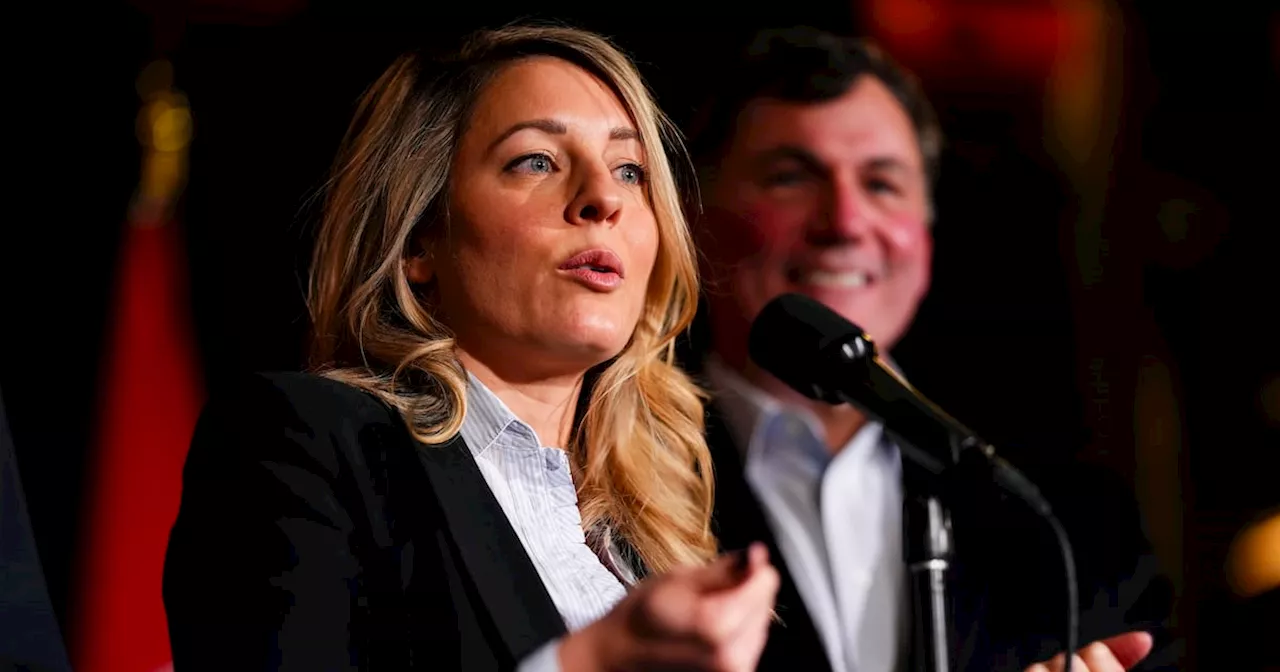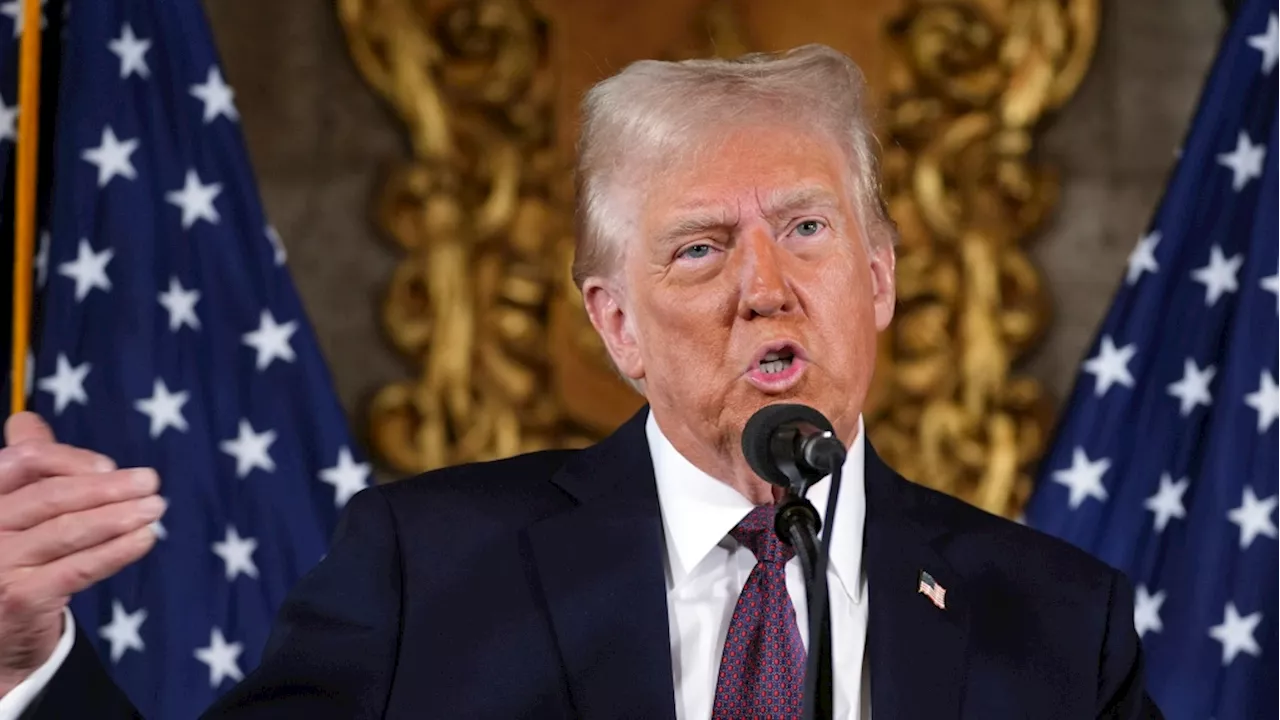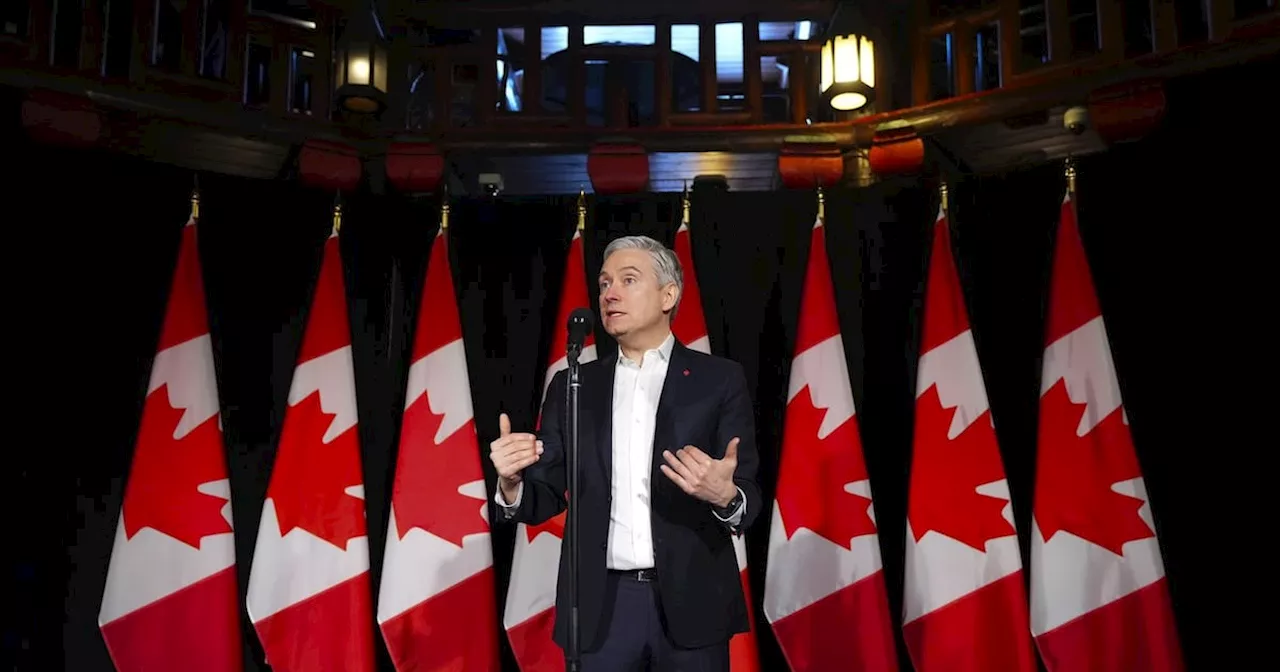Canadian officials are adopting a different tone after President Donald Trump ordered a study of the United States' trade relationship with Canada, pushing the threat of devastating tariffs down the road — temporarily.
Kelly Geraldine Malone, The Canadian PressInnovation, Science and Industry Minister Francois-Philippe Champagne speaks to reporters during a cabinet retreat at Chateau Montebello in Montebello, Que., on Tuesday, Jan. 21, 2025. THE CANADIAN PRESS/Sean Kilpatrick
The memorandum orders multiple federal agencies to study trade policies and trade deficits. It directs the secretary of commerce and the secretary of homeland security to assess migration and fentanyl flows from Canada, Mexico and China and recommend “appropriate trade and national security measures to resolve that emergency.”
Kirsten Hillman, Canada’s ambassador to the U.S., said the memorandum provides Canadian officials with a framework and key department contacts to allow them to make the case against the tariffs. Some officials and experts have suggested the damaging duties are part of Trump’s strategy to rattle Canada and Mexico ahead of a mandatory 2026 review of the trilateral trade pact.
Canada Latest News, Canada Headlines
Similar News:You can also read news stories similar to this one that we have collected from other news sources.
 Trump Inauguration: No Mention of Canada, Tariff Threat on HoldPresident Donald Trump's inaugural speech, marking his return to the White House after a two-month political standoff, did not address the U.S.'s relationship with Canada. While Trump had threatened a 25% tariff on Canadian goods, a Trump official indicated that the president may only sign a memorandum directing federal agencies to study trade issues, including those involving Canada, Mexico, and China. Canadian Prime Minister Justin Trudeau congratulated Trump and emphasized cooperation, while acknowledging Canada's efforts to secure the border.
Trump Inauguration: No Mention of Canada, Tariff Threat on HoldPresident Donald Trump's inaugural speech, marking his return to the White House after a two-month political standoff, did not address the U.S.'s relationship with Canada. While Trump had threatened a 25% tariff on Canadian goods, a Trump official indicated that the president may only sign a memorandum directing federal agencies to study trade issues, including those involving Canada, Mexico, and China. Canadian Prime Minister Justin Trudeau congratulated Trump and emphasized cooperation, while acknowledging Canada's efforts to secure the border.
Read more »
 Trump Hints at February Tariffs on Canadian Goods, While Canadian Politicians Back Away from Carbon PricingThis article covers several news stories from The Canadian Press. It starts with US President Donald Trump's suggestion of 25% tariffs on Canadian imports by February 1st, despite earlier indications of a study on trade practices. The article also discusses the three frontrunners in the Liberal leadership race shifting away from the Liberal government's carbon pricing policy. Other news covered includes Statistics Canada's upcoming release of December's inflation figures, thawing permafrost in the Arctic tundra, and a focus on the benefits of small care homes for long-term residents.
Trump Hints at February Tariffs on Canadian Goods, While Canadian Politicians Back Away from Carbon PricingThis article covers several news stories from The Canadian Press. It starts with US President Donald Trump's suggestion of 25% tariffs on Canadian imports by February 1st, despite earlier indications of a study on trade practices. The article also discusses the three frontrunners in the Liberal leadership race shifting away from the Liberal government's carbon pricing policy. Other news covered includes Statistics Canada's upcoming release of December's inflation figures, thawing permafrost in the Arctic tundra, and a focus on the benefits of small care homes for long-term residents.
Read more »
 Trump to Implement Tariffs on Canadian Goods, Prompting Canadian ResponseU.S. President Donald Trump's inauguration speech signaled his intention to impose tariffs on Canadian goods, reversing earlier reports that suggested a delay. Canadian officials have expressed preparedness for this move, outlining plans to defend Canadian interests and jobs.
Trump to Implement Tariffs on Canadian Goods, Prompting Canadian ResponseU.S. President Donald Trump's inauguration speech signaled his intention to impose tariffs on Canadian goods, reversing earlier reports that suggested a delay. Canadian officials have expressed preparedness for this move, outlining plans to defend Canadian interests and jobs.
Read more »
 Canadian Ministers Take Trump's Threats to Absorb Canada SeriouslyCanadian ministers are responding to U.S. president-elect Donald Trump's repeated assertions that Canada should become the 51st state of the U.S.
Canadian Ministers Take Trump's Threats to Absorb Canada SeriouslyCanadian ministers are responding to U.S. president-elect Donald Trump's repeated assertions that Canada should become the 51st state of the U.S.
Read more »
 Canadian Pushback to Trump's Threat to Acquire Canada as 51st StateFollowing Donald Trump's threat to use economic force to acquire Canada as the 51st state, Canadians have expressed cautious optimism and resistance. While some worry about potential tariffs, others remain confident in Canada's sovereignty. Ontario Premier Doug Ford reiterated that Canada is not for sale and emphasized collaboration between Canada and the U.S.
Canadian Pushback to Trump's Threat to Acquire Canada as 51st StateFollowing Donald Trump's threat to use economic force to acquire Canada as the 51st state, Canadians have expressed cautious optimism and resistance. While some worry about potential tariffs, others remain confident in Canada's sovereignty. Ontario Premier Doug Ford reiterated that Canada is not for sale and emphasized collaboration between Canada and the U.S.
Read more »
 Trump Threatens 25% Tariff on Canadian Goods, Ford Calls for Team Canada ResponseU.S. president-elect Donald Trump has threatened to impose a 25% tariff on Canadian goods upon his inauguration next week. Ontario Premier Doug Ford warns of potential job losses, urging federal government action. Ford advocates for a stronger energy partnership with the U.S. and emphasizes the need for a unified Canadian response.
Trump Threatens 25% Tariff on Canadian Goods, Ford Calls for Team Canada ResponseU.S. president-elect Donald Trump has threatened to impose a 25% tariff on Canadian goods upon his inauguration next week. Ontario Premier Doug Ford warns of potential job losses, urging federal government action. Ford advocates for a stronger energy partnership with the U.S. and emphasizes the need for a unified Canadian response.
Read more »
